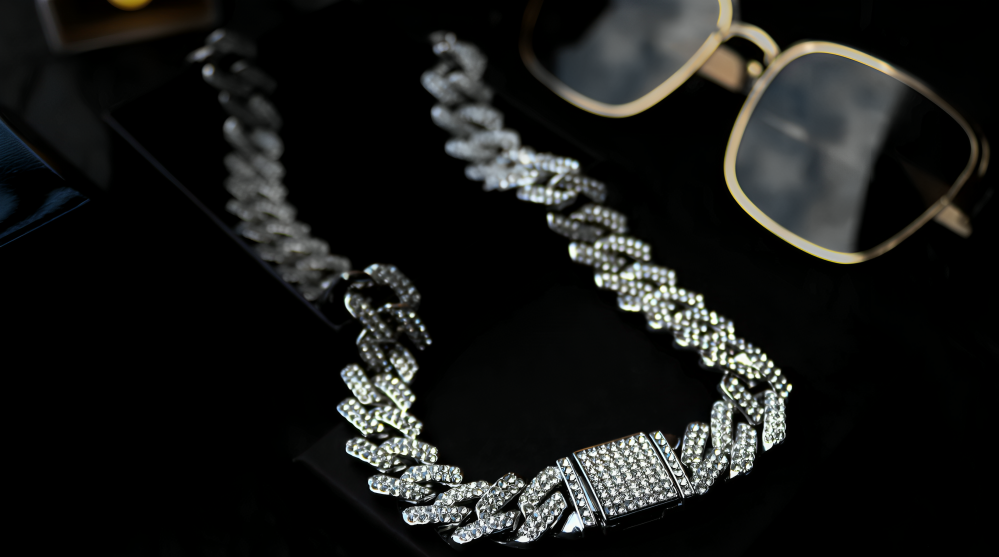Ever wondered why certain colors make you look like a million bucks and others just don’t seem right? It’s all in your skin tone. Mastering how to dress for your skin tone can take your style from average to amazing. How can men decide on the colors of their clothes based on their natural skin tone? This guide explains how to do just that, making you look and feel great.
Why Skin Tone Matters in Fashion
Fashion is not just about pairing up an outfit; it’s about showcasing your personality while accentuating your natural features. One of the most impactful ways to do this is through colors that complement your skin tone. The right colors make you look healthier, more vibrant, and even younger.
How Colors Affect the Way You Look
Colors dramatically affect what others think about you and how you feel. The right shades will brighten up your complexion, enhance your positive features, and even make you feel more confident. The wrong colors will dull you out, and make you look tired, or even older.
Determining Your Skin Tone
Before getting into the nitty-gritty of colors, let’s determine your skin tone and undertone.
Understanding Undertones
Warm, Cool, and Neutral Undertones Explained
Your skin’s undertone is the underlying hue that informs which colors look best on you. The three primary undertones include:
- Warm Undertones: Usually comprised of a base of yellow, gold, or peach.
- Cool Undertones: Typically pink, red, or even blue.
- Neutral Undertones: A well-balanced mix of warmth and coolness.
How to Determine Your Undertone
To find your undertone, look at the veins on your wrist. If they appear greenish, you most likely have warm undertones. If they appear bluish or purplish, you’re cool-toned. If you can’t quite determine between the two, you may have neutral undertones.
Skin Tone Categorization
Now that you have a general idea about your undertone, categorize your skin tone to make more specific color choices.

Fair to Light
People with this skin color have pale skin that burns easily in the sun. Freckles are also common.
Medium to Olive
Medium-toned skin tends to have a natural tan; skin with an olive undertone often takes on a green or neutral tone. This category usually tans well.
Deep to Dark
Deep or dark skin tones are often rich and even in tone. This group rarely burns and usually has a warm or neutral undertone.
Best Garment Colors for Skin Tones
Wearing the right colors can enhance your natural complexion. Here’s a guide to colors for each skin tone.
Colors for Fair to Light Skin Tones
- Best Color Choices: Pastel shades, light blues, and earth tones such as camel and beige look good because they don’t overpower your skin.
- Colors to Avoid: Avoid vibrant colors such as neon hues, as they may have a bleaching effect. Similarly, avoid whites and very pale yellows, as they will be too close to your skin tone.
Colors for Medium to Olive Skin Tones
- Best Color Choices: Men with medium to olive skin tones are lucky because they can pull off a wide range of colors. Rich jewel tones like emerald green, royal blue, and deep purples usually look striking. Earthy shades including browns, olives, and burnt oranges also work. While this skin tone can pull off most colors, avoid those too close to your skin tone, such as light browns or beiges, as they tend to make one look dreary.
Colors for Deep to Dark Skin Tones
- Best Color Choices: If you have deep or dark skin, bold and bright colors are your friend. Bright red, cobalt blue, and crisp white create a sharp contrast that makes your complexion pop. Deep plum, forest green, and rich gold also look amazing.
- Colors to Avoid: Be wary of dark browns and blacks as they lack contrast. Also, avoid very dull or pastel colors, as they will completely wash you out.
Accessories Based On Skin Tones
Your accessories should complement your skin tone as well.
How to Match Accessories to Your Skin Tone
- Watches and Jewelry: Silver and white gold complement fair to light skin better than yellow gold. Individuals with medium skin tones can pull off both silver and gold, but darker-skinned individuals really shine with gold, copper, and brass accessories.
- Belts, Shoes, and Bags: When using leather accessories like belts and shoes, pick colors that contrast with your skin color. Lighter browns work well on very fair skin, while darker browns, blacks, and even burgundy can look nice on medium to darker skin tones.
Seasonal Color Analysis
Another way to select flattering colors is through seasonal color analysis, which divides skin types into four seasons: Spring, Summer, Autumn, and Winter.
Four Season Color Types
- Spring: Bright and Warm: Spring types have warm undertones and wear best in clear, warm colors, including peach, coral, and golden yellow.
- Summer: Soft and Cool: Summer types are cool and should wear soft, subdued colors like lavender, rose, and pastel blues.
- Autumn: Deep and Warm: Autumn types have warm undertones and do best in deep, rich colors including olive, mustard, and burnt orange.
- Winter: Deep and Cool: Winter types have cool skin and wear best in dramatic, cool colors like navy, emerald, and pure white.
How to Determine Your Seasonal Color Type
Skin tone and undertone, combined with natural hair and eye color, influence the determination of a seasonal color type. This can be done using various online tools or by consulting a color analyst.
Seasonal Color Palettes for Men
Each seasonal type is assigned a color palette that harmonizes with your skin tone. These palettes will streamline your shopping and dressing.
How to Build a Skin Tone Wardrobe
After determining which color palette looks best on you, it’s time to develop a wardrobe that complements your skin tone.
How to Develop an All-Purpose Color Palette
- How to Choose Basic Wardrobe Pieces: Start with neutrals that work with your skin tone—these are the colors to build your wardrobe around. For example, lighter-skinned men would want lighter grays and navy blues, while darker-skinned men might opt for charcoals and deep browns.
- Mix-and-Match Colors: After securing staple colors, add secondary colors based on your personalized palette. This approach allows for easy mixing and matching.
How to Shop for Skin Tone-Friendly Clothing: Tips
- How to Shop Online: When shopping online, use product shots and descriptions to gauge the color. When possible, read reviews or look for user photos showing the color under different lighting.
- In-Store Shopping Strategies: In-store shopping lets you try on clothes in various lights to see how they enhance your skin tone. Bring a trusted friend or use a mirror in natural light to assess how a color looks on you.
Common Mistakes to Avoid
- Completely Ignoring Your Skin Tone: Don’t follow trends blindly; consider how the trend and colors look on your skin tone. What looks great on another person might not work for you.
- Not Considering the Power of Neutrals: Neutrals are the core of any wardrobe. Ensure your neutrals complement your skin tone, as they will be the base of most outfits.
- Wearing Too Many Bold Colors: While bold colors can be attractive, too many will render an outfit overwhelming. Balance your outfit with neutrals or softer tones, combining bold colors.
Dressing according to your skin tone is one of the best ways to enhance your appearance and keep your style fresh. Understand your skin tone, choose colors that fit well, and build a wardrobe that will look great and last for years to come. So next time you shop, keep your skin tone in mind and choose colors that make you look and feel your best.




